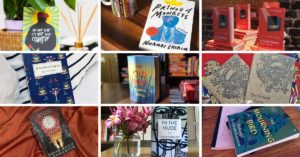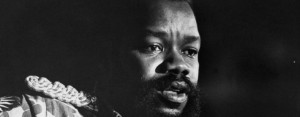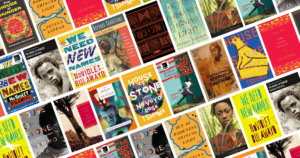
Oris Aigbokhaevbolo’s two-day workshop, Write with Style, is both an effort to create a learning space for a growing demographic of young Nigerian writers and an inquiry into the main tactics of a writer’s trade. The workshop facilitator, an award-winning journalist and editor, stands distinguished as a critical voice in Nollywood and Afro-pop commentary, and, within that niche, as a writer uniquely pre-occupied with delicate presentation on the page. Aigbokhaevbolo’s journaling attitude suggests that he is of the school that essaying about pop music, like in his review of Tekno’s “Pana,” could approximate lyricism. As a corollary, Oris’ writing and online persona are replete with punch lines, and quibbles over punctuation. He would freely deploy the Oxford comma, but urges caution with the semi-colon. Beyond writing quirks, Oris takes the stance of a conscientious prose stylist, and Write with Style, the sentiment runs, would be an avenue to pass some of his learning, experience, and craft detail to workshop attendees.
The first edition of the workshop was held in August, at the same venue as this second, a pristine location in Ikeja, Lagos, which I now approached, tentative and implacably curious. A flight of stairs, and soon the door pulled wide to a bubbling room of over a dozen, youngish, Workshop participants. A chaperone stands apart and welcoming; a photographer idles by; and a looming silhouette, of the writer-turned-coach, angles over a white board. No sooner than I had settled in my seat did attention drift to the urgent matter at hand: how does anyone learn to write with style? How could anyone teach it? Or put differently: what does Oris Aigbokhaevbolo talk about when he talks about style?
All evening, these questions rumbled on as I gawked vacantly around the space, and at the facilitator who, in steering an animated class, amidst banter and jokes, took extended reviews of anonymous sample writing. A piece is read, followed by a chorus of corrections: redundancy, misapplied phrases, flow, sequence of events, and clarity of expression among the prime targets for revision. At the end of every review, there is an enthusiastic nod, what could be read as a mark of approval by all participants—save, perhaps, for the grudging writer whose submission had just been vigorously shaken up.
By the end of the third script, it had become clear that the facilitator’s acumen as an editor, and improvisation as event host, would be the main instruments to prosecute the day’s task. The more scripts that are reviewed, the more evidence is furnished that this section’s tactic is to jointly improve submitted texts to their nearest perfection, participants learning along.
Soon, the conversation drifted to publishing cues and suggestions on how to land a feature story—a segment perhaps deserving of its own subtitle: Publish with Style? There was room for questions and answers, and for light refreshment at sunset, as the event wrapped to a cheer from facilitator and participants. Still, my brief experience at the workshop was only tangentially linked with my received ideas of what writing with style probably is and I wasn’t giving up on the parallel monologues yet. “Style, for the writer,” Marcel Proust writes in The Remembrance of Things Past, “no different from color for the painter is a question not of technique but of vision.”
After the workshop, I linked up with the facilitator for a follow up chat, and tried to probe him on the chief subject. “Style,” Aigbokhaevbolo returned blankly, “is indefinable but when you see it you know it.” He added, in a sentiment not far from Proust’s, that a person’s writing style is interlinked with their personality. But where Proust describes style as embedded in the vision field, the actual substance of a writing vocation, like colors for a painter, Aigbokhaevbolo relays style as a “window,” no more, perhaps, than a pair of lenses, an aesthetic décor.
Between an influential 20th century author and an acclaimed pop journalist, the lines begin to appear over the essential and technical understanding of style and, indeed, the sum of a writer’s activity. For Proust, style is bone-deep, springing from acute formative sensibilities; for Aigbokhaevbolo, style may be a cleverly applied layer of paint—necessary but sometimes conspicuously absent. In presentation and choice of a theme, “Write with Style,” then, is set up as a corrective against an unfortunate choice: that one could write, somehow, without style; to paint, in a Proustian sense, without color.
Writing workshops, in different niches and levels of expertise, are sustained by the claim that feedback from a writer’s peers and guide can enhance craftsmanship. For many budding writers, at any rate to be placed in a community of like-minds, in what is a famously lonely craft, might itself stand as needed affirmation toward achieving a coherent idea of one’s creative methods and goals. With Write with Style, Aigbokhaevbolo, in the interim, is opening a warm space for journalists, fiction writers, reviewers, and others to converge, deliberate, and, if they like, present their writing to constructive feedback in the journey to craft mastery. Still, it might help to remember that in writing, as in fashion, there may be a one-size-fits-all, but when it comes to style, it is bespoke.
About the Writer:

Tobi Alaaka’s writing is a meditation on online communities, and their modest potential as emerging forms of resource gathering and sharing, and their capability as sites of political resistance. His work has appeared in Music in Africa and The Native. His essay, “Facebook Writers and Other Trivia,” was a finalist for the 2018 Brittle Paper Anniversary Award.








COMMENTS -
Reader Interactions